Metro Awakening review: One of the best VR shooters yet, but not without flaws
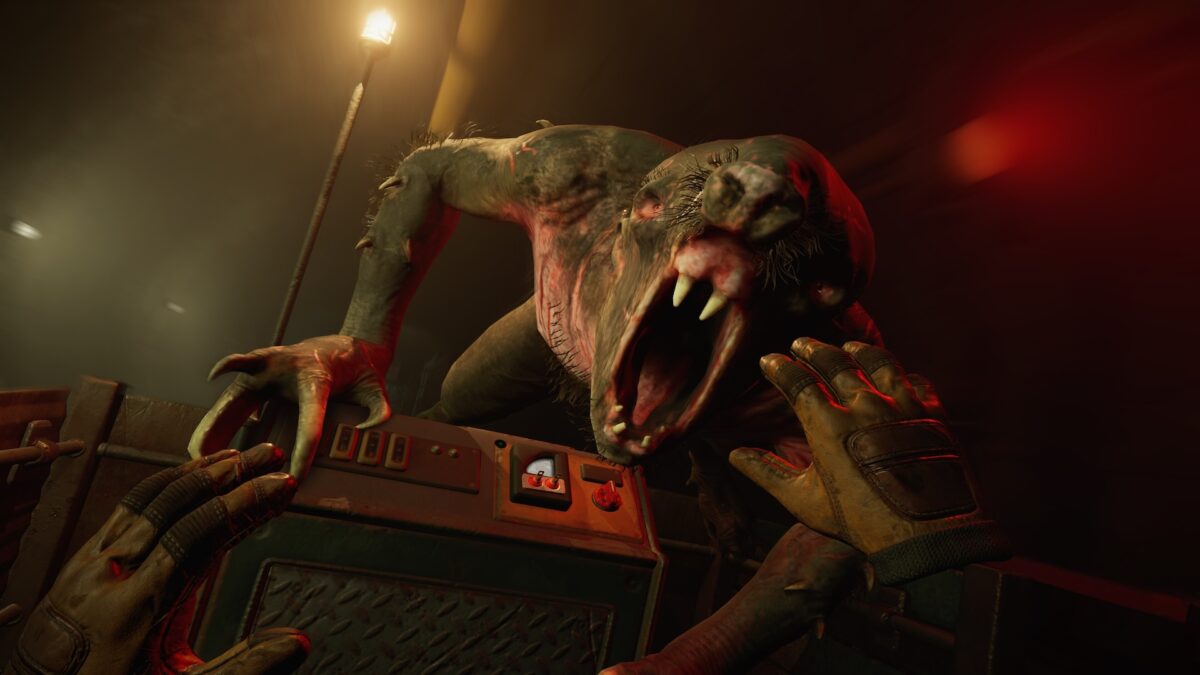
The Metro series from 4A Games enjoys cult status among shooter fans. Now it is celebrating its VR debut with Metro Awakening. Does Vertigo Games succeed?
If you ask shooter fans about the best post-apocalyptic shooters, the Metro series by 4A Games will often be the answer. Since November 7th, you can experience this universe in VR for the first time. Not only on powerful PCs and the PSVR 2, but also on Quest 2 and 3 headsets.
Content
Metro Awakening in a nutshell
Metro Awakening is a VR-exclusive prequel to the shooter sensation Metro 2033. Penned by novelist Dmitry Glukhovsky, the dozen-chapter story takes place in the Moscow Metro, which serves as a refuge for many people after a devastating nuclear war.
As in Arizona Sunshine, developer Vertigo Games does a great job with the gunplay, and the post-apocalyptic atmosphere is excellent. Find out what else makes the game stand out and where its weaknesses lie in our review.
- Tested on: Meta Quest 3S
- Also available on: Meta Quest 3, 2 and Pro, PSVR 2, Steam
Metro Awakening is for you if you...
- like to immerse yourself in a dark, post-apocalyptic world full of danger
- like games with sophisticated weapon handling
- want to experience a well-staged, almost seven to nine-hour VR-exclusive story from the Metro universe
Metro Awakening is less suitable for you if you...
- suffer from acute claustrophobia and/or arachnophobia (note: an Arachnophobia mode without spiders is in the works)
- can't stand linear level design and occasional backtracking
- can neither see blood nor want to fight against at times grotesque enemies
Welcome to Moscow’s underground world
The book Metro 2033 by Dmitry Glukhovsky is still considered one of the best post-apocalyptic novels of the 00s. What many people don't know: Even before Glukhovsky landed a lucrative book publishing deal in 2005, he posted the manuscript online. This, in turn, led to numerous game developers contacting him. One of them was the Ukrainian studio 4A Games, which successfully adapted Metro 2033 as a story-driven first-person shooter.
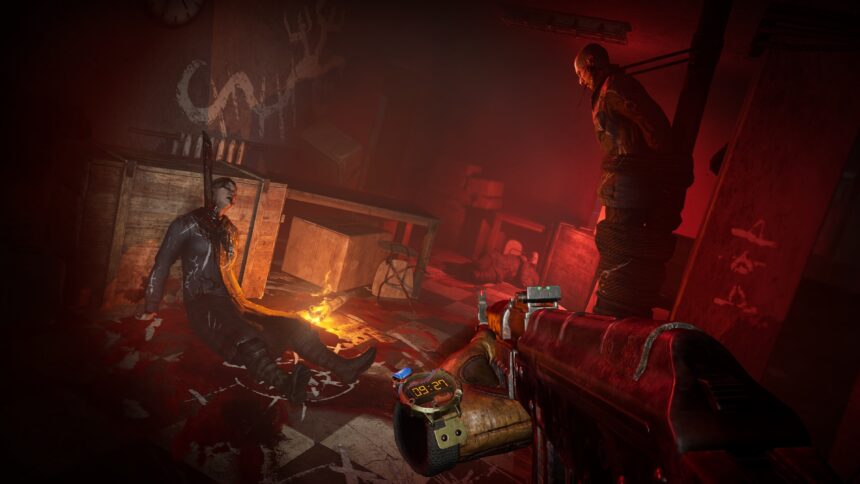
Metro Awakening contains a lot of violence and is not for the faint of heart. | Image: Vertigo Studios Amsterdam / Plaion
Released in 2010, the game sold over 1.5 million copies and received a no less exciting sequel in May 2013 with Metro: Last Light. Metro Exodus, released in February of 2019, was also very well received by the fan community and has sold over ten million copies. However, the makers have yet to provide us with the VR support for the first three Metro titles that has been widely demanded.
It is therefore all the more pleasing that the series has now made the step into virtual reality with Metro Awakening, and that developer Vertigo Games was able to recruit Glukhovsky himself as the main writer for the plot.
From a narrative perspective, Glukhovsky created Awakening as a prequel to Metro 2033. Fifteen years have passed since the devastating nuclear war that turned Russia's capital into a post-apocalyptic field of rubble and forced the survivors to relocate to Moscow's sprawling subway system.
One of these survivors is Serdar, a doctor. He and his wife Yana have settled in the Akademecheskaya metro station, where they have already endured some difficult times. The loss of their child, Petya, has hit the couple particularly hard and has left Yana in constant need of medication. After a dramatic prologue mission - which we won't spoil here - your task in the first chapter is to get this medicine for Yana.
A claustrophobic world
What begins as a relatively relaxed stroll through a comfortably furnished subway station soon turns into an action-packed and claustrophobic apocalyptic thriller. The corridors of the Moscow metro are dark, dirty and often very narrow. Early on, for example, I have to squat and crawl through tunnels dug by mutant rats. Roots hang low in my face and the flashlight on my head runs out of juice as I hear bloodcurdling sounds shatter the silence.
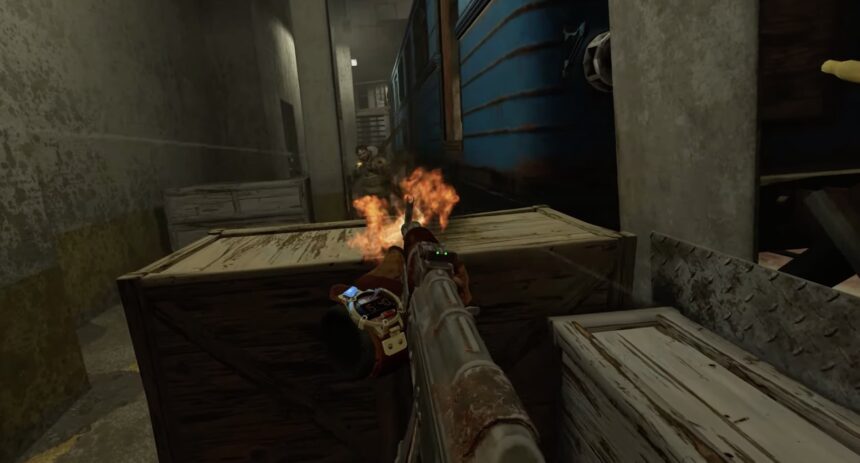
Weapons like the machine gun have to be stabilized with your other hand. | Image: Vertigo Studios Amsterdam / Plaion
Vertigo Games also does a good job of playing with light and shadow. At one point in the second chapter, for example, I'm standing on a crate and can see the outline of a giant rat's head a few feet in front of me, which seems to be feasting on a corpse with its razor-sharp teeth. Keyword corpses: You'll find them a lot in Metro Awakening - sometimes covered in blood and often grotesquely disfigured. Metro Awakening is surely not for the faint of heart.
Believable interactions
The fact that Metro Awakening immediately captivates me is not only due to the believable, albeit linear, design of the world, but also to the way I interact with it. For example, when I encounter thick steel sliding doors, I have to grab them with both hands and slowly push them aside. If I'm standing in front of a boarded-up passageway, the only way I can get through is to grab the boards in front of it and pull them out of their anchorage. And if an iron gate blocks my way, I have to pull on the ropes attached to it several times, and so on. These elements provide a high level of immersion - and sometimes a heart-pounding experience. For example, when I can hear enemies approaching from a distance while I'm still trying to turn a big valve that opens an even bigger door.
I also have to power up old fuse boxes to get the lights to turn on. Or to open electric door locks. So I reach over my left shoulder, pull out my all-purpose backpack and grab my portable crank charger. I connect two power cords to the fuse box, crank until the volt meter is full, and am delighted when a green light comes on in front of me.
Wonderful weapon handling
The handling of the various weapons is similarly immersive. If I want to reload my rusty Kalashnikov, I first have to manually remove the empty clip from the weapon. Then I reach to my chest, grab a new clip, and insert it into the ammunition slot. Now I pull a bolt on the right side and I'm ready to fire. Details like this show that the developers have a lot of experience with weapons from their previous games Arizona Sunshine and After the Fall.
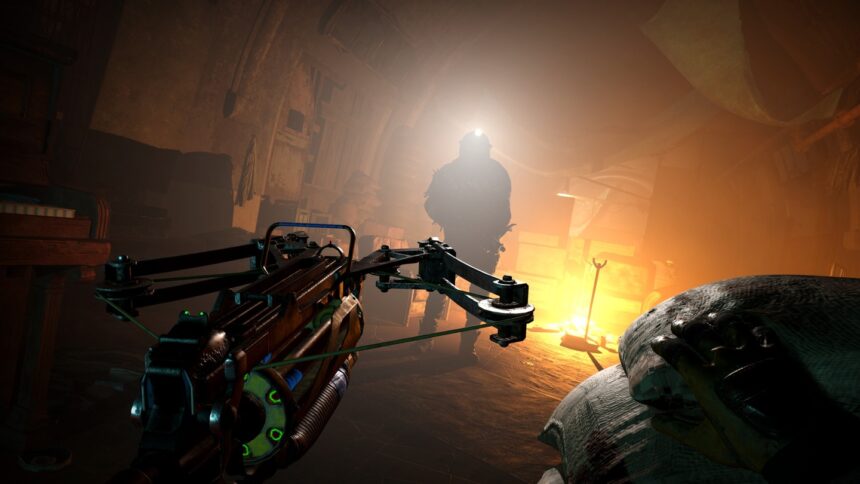
Later in the game, you will be wielding this crossbow, among other things. | Image: Vertigo Studios Amsterdam / Plaion
Even more than in the aforementioned shooters, however, I have to deal with a lack of ammunition. A circumstance that Metro fans will be familiar with from previous games, and one that adds to the sense of survival. Whether for your Tokareva TT-33 pistol or the massive shotgun called the Shambler - cartridges are a rare commodity and should be used wisely. Especially on the higher difficulty levels, precision is required. On the other hand, I have unlimited ammunition for the high-powered machine gun, which is usually mounted on a trolley. In return, I have to keep an eye on a small temperature gauge to prevent overheating.
When it comes to combat, Metro Awakening also provides a pleasing amount of adrenaline. It's not uncommon for enemies to attack from multiple directions, take cover, change position, and sometimes even chase you halfway through the level. The latter happened to me during a fight with a soldier who was so heavily armored that I eventually ran out of ammunition.
Solid stealth component - with room for improvement
If you want to avoid confrontation altogether, try the stealth method. In other words: I sneak past the enemy crouched, making no noise and with my flashlight off. Or I can distract them by throwing a can or bottle so I can sneak past. Of course, you can also sneak up behind a patrol and knock them down with a heavy object like the butt of your pistol. If you hit them right, they'll usually go straight to the ground and never get up.
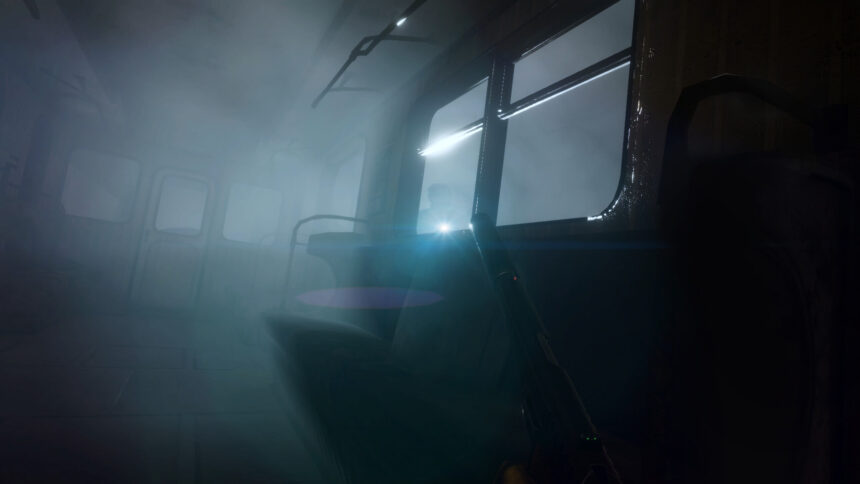
If you have to hide in a dark corner without any ammunition, the tension is high. | Image: Vertigo Studios Amsterdam / Plaion
The solid stealth gameplay is flanked by a small light on your wristwatch. It lets you know at a glance whether you are hiding or not. But in some places, the rooms are so cramped that there is hardly any room to hide effectively. In case of a confrontation, the enemy's behavior is often predictable. Situations can usually be resolved by running up to human opponents and shooting them. Or by hiding in a corner and waiting for mutant rats and the like to attack again from a predictable direction. More sophisticated AI would have been desirable here.
Vertigo Games should also improve the checkpoint spacing. In my opinion, they are not close enough to each other, which can be frustrating especially for VR newbies. The fact that I sometimes have to fight my way through sections that I have already explored in detail is frustrating.
Conclusion: An excellent but imperfect VR debut
With Metro Awakening, Vertigo Games delivers a gripping post-apocalyptic shooter that tells a successful prequel story over twelve chapters. No prior knowledge of the Metro books or games is required, making it easy to jump in.
The interaction with the world and the gadgets works really well. The handling of the weapons is convincing. Most of the fights are exciting, and the soundtrack is well arranged. Plus: There are plenty of scary moments thanks to the great play of light and shadow and the mutant enemies you'll confront.
Graphically, the Quest version performs quite well, without reaching the quality of Batman: Arhkam Shadow. For a visual comparison between the Quest 3 and PSVR 2 versions, take a look at the linked article.
However, I hesitate to give the game a full recommendation. The level design and the locations are not varied enough for me, especially in the later parts.
Other points of criticism include the sometimes predictable actions of the enemies, the unfair distribution of save points, and the fact that there are far too few creative puzzles. However, if you can overlook these flaws, you will be entertained for seven to nine hours at a good level.
You can buy Metro Awakening here
Note: Links to online stores in articles can be so-called affiliate links. If you buy through this link, MIXED receives a commission from the provider. For you the price does not change.